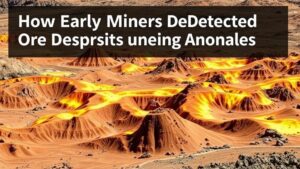Recovering Gold From Seasonal Streams in High-Elevation Areas
Recovering Gold From Seasonal Streams in High-Elevation Areas
Gold recovery in high-elevation areas has gained attention due to the unique geological and hydrological conditions that favor the concentration of gold particles in seasonal streams. This article explores the methods, challenges, and implications of gold recovery in such environments, providing a comprehensive understanding of the processes involved.
The Geology of High-Elevation Streams
High-elevation areas often feature specific types of geology that are conducive to gold accumulation. Commonly, these regions are characterized by:
- Granite and Schist Formations: These metamorphic rocks can host gold-bearing quartz veins, which weather and release gold particles into nearby streams.
- Sedimentary Deposits: As streams erode surrounding rock, they can transport sediments rich in gold, particularly during spring melt-off or heavy rains.
For example, the Sierra Nevada region in California showcases how glacial activity can concentrate gold deposits in river systems, forming pay streaks where miners commonly find gold.
Techniques for Recovering Gold
Several methods are employed for recovering gold from seasonal streams. Each technique has its advantages and is suitable for different environmental conditions:
- Panning: This traditional method involves using a shallow pan to wash away lighter materials while retaining heavier gold particles. It is most effective in small streams with visible gold deposits.
- Sluicing: Involves a larger setup where water runs through a sloped box lined with riffles. Sluices can capture larger quantities of sediment, increasing the chances of gold recovery.
- Dredging: This method includes using suction or mechanical devices to remove stream bed material. While effective, it can significantly disturb the ecosystem and is often regulated.
A study conducted in Colorado found that sluicing could recover approximately 90% of the available gold in a stream, highlighting its effectiveness compared to panning and dredging.
Environmental Considerations
Recovering gold from seasonal streams in high-elevation areas poses significant environmental challenges. The following concerns must be addressed:
- Stream Disruption: Dredging and sluicing can alter water flow, adversely affecting aquatic habitats. Sustainable practices must be adopted to minimize ecological impact.
- Erosion: Disturbing stream beds can lead to increased erosion and sedimentation, harming surrounding ecosystems.
- Regulations: Many regions have strict laws regarding mining practices to protect natural resources. Miners must familiarize themselves with local regulations to operate legally.
Seasonal Timing for Gold Recovery
Timing is critical when recovering gold from seasonal streams. The best periods for gold recovery typically coincide with:
- Spring Meltdown: As the snow melts, streams experience higher flow rates, unearthing and moving gold previously trapped in sediment.
- Post-Heavy Rainfall: Rain events can mobilize sediments, causing shifts in stream beds and exposing new gold deposits.
For example, miners in the Yukon Territory often plan their operations around the spring thaw to maximize recovery efforts efficiently.
Real-World Applications
Several mining operations and hobbyist groups nationally and internationally have successfully implemented gold recovery strategies in high-elevation streams. Notable examples include:
- The Gold Rush Era: The historic rush in California serves as a pivotal example where streams were extensively panned and sluiced, leading to significant economic opportunities.
- Modern Recreational Mining: Groups such as the Gold Prospectors Association of America promote sustainable recreational mining, educating enthusiasts on effective and ecologically responsible practices.
Conclusion and Actionable Takeaways
Recovering gold from seasonal streams in high-elevation areas requires a blend of technology, geological understanding, and environmental stewardship. Individuals interested in gold prospecting should consider the following:
- Research local geology to identify promising streams.
- Choose sustainable methods, such as panning and sluicing, to minimize environmental impact.
- Understand and comply with local mining regulations to ensure legal operation.
With careful planning and consideration of ecological factors, gold recovery in high-elevation areas can be both rewarding and sustainable.
